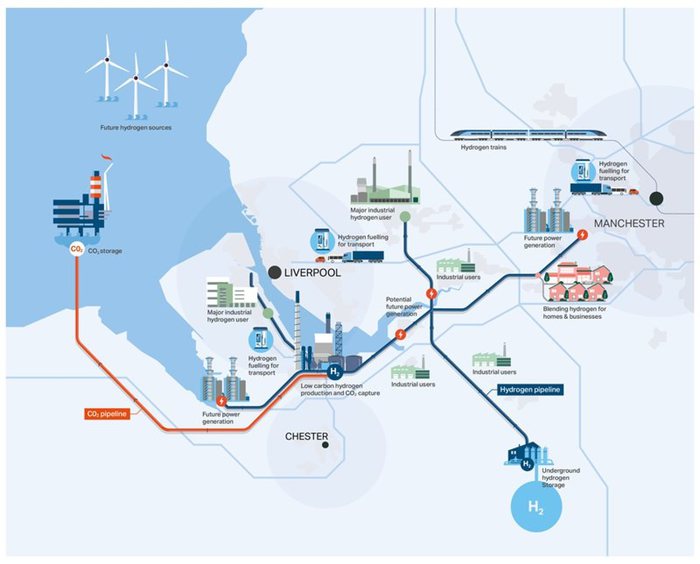by Stefano Secondino
The carbon dioxide collected by companies could soon be collected and stored under the sea, in depleted hydrocarbon fields. This is the project Eni is working on off the Romagna coast. A topic on which the spotlight of environmentalists has already turned on. On 12 May, in conjunction with the Eni assembly, Fridays For Future, Greta Thunberg's youth movement for the climate, organized a demonstration in Ravenna against the project. The underground storage of carbon has always been opposed by environmentalists, so the protest could get broad support, with the risk that it could turn into a new TAV on the Adriatic. On the other hand, however, Eni claims that the plant is safe, reduces greenhouse gas emissions and creates jobs.
The energy company wants to pump waste CO2 from industrial production into some of its depleted offshore fields. In Italy, 70-80 million tons of carbon dioxide (the main cause of global warming) are emitted every year by refineries, steel, cement, fertilizer and paper factories. These are the so-called "hard to abate" sectors, the most difficult to decarbonise. To push companies to "clean up" their production, the European Union raises CO2 taxes every year, through the ETS emissions trading system. Decarbonising becomes more and more a budgetary requirement, and an attractive market is opening up for CCS (Carbon Capture and Storage).
Eni is already building a carbon storage plant in depleted fields in Liverpool Bay, to decarbonise the local industrial district. A project co-financed by the British government, which wants to build seven plants of this type. In Ravenna, Eni would like to do the same, with an investment of 1 billion euros and the promise of significant employment benefits. The fields could receive 2.5 million tons of CO2 per year, which can be increased depending on the market, and have a total estimated capacity of 500 million tons.
The company claims that the plant is safe: it says depleted fields at a depth of 3-4,000 meters are optimal for CO2, because they have contained hydrocarbons for millions of years, are isolated by impermeable soil layers and do not present seismic risks. .
Environmentalists, and the guys from Fridays For Future, think differently. For them, CCS is just a way to continue using fossil fuels and slow the switch to renewable energy. Furthermore, the storage of CO2 underground presents risks of leakage in the event of an earthquake.
"With the promise of fossil companies to offset emissions (aka continue with polluting activities by hiding part of the gases emitted), a new era of Greenwashing opens - writes Fridays For Future -. Eni's CCS slows down real decarbonization, removes others. billions to the reconversion of our energy system and opens the way to the age of hydrogen, which brings with it the construction of new gas pipelines and the strengthening of the energy monopoly by a few companies with a polluted history ".
What is CCS and how it works
. CCS (Carbon Capture and Storage) is the process of capturing the carbon dioxide produced in industrial processes and subsequent storage underground, in depleted hydrocarbon deposits or in rock formations.
It serves above all to avoid greenhouse gas emissions into the atmosphere by production sectors where these emissions are difficult to eliminate (the so-called "hard to abate"): steel mills, cement factories, refineries, fertilizer factories, paper mills.
There are several technologies for capturing. The most used is to spray the exhaust fumes with a solution of amines, which capture the CO2 and precipitate to the ground. The amines are then heated and release pure carbon dioxide, which is collected,while the amines are reused.
CO2 can be transported in pipelines, or compressed and liquefied and loaded into tankers or ships. When it arrives at the storage facility, it is compressed to 79 atmospheres and injected in liquid form into depleted hydrocarbon deposits, salt formations, non-exploitable coal mines, shale rocks, basalt formations. Temperature and pressure at those depths keep it in liquid form, and the waterproof top layers prevent it from leaking.
CCS has a cost for companies: so much so that at this stage it is often subsidized by the states, so that the decarbonisation expenditure does not send factories out of the market. In the European Union, the CO2 taxation system, through the ETS emissions trading system, is leading to ever increasing burdens for businesses: the price of CO2 is increased every year by Brussels, to push producers to decarbonise. In this context, the CCS becomes an opportunity to reduce the tax burden, and this makes it increasingly attractive.
CCS can also be used for the production of blue hydrogen: the gas is obtained from methane, and the waste carbon dioxide is buried, so that the hydrogen has zero emissions into the atmosphere. Another use of Carbon Capture is to decarbonise the production of biomethane from agricultural waste and biomass. The fermentation of these produces biogas: by removing the CO2 from this, biomethane is obtained. CCS prevents waste carbon dioxide from entering the atmosphere and creating a greenhouse effect.
The CO2 from industrial processes can also be used to produce new materials: it is the so-called CCU, Carbon Capture and Utilization. For example, Eni has tested a process to mix this gas with construction waste and produce high quality cement. An experimental production plant will be built in Ravenna. Eni is also studying the cultivation of algae with waste CO2: the plants are then used for pharmaceutical products or biofuels.









